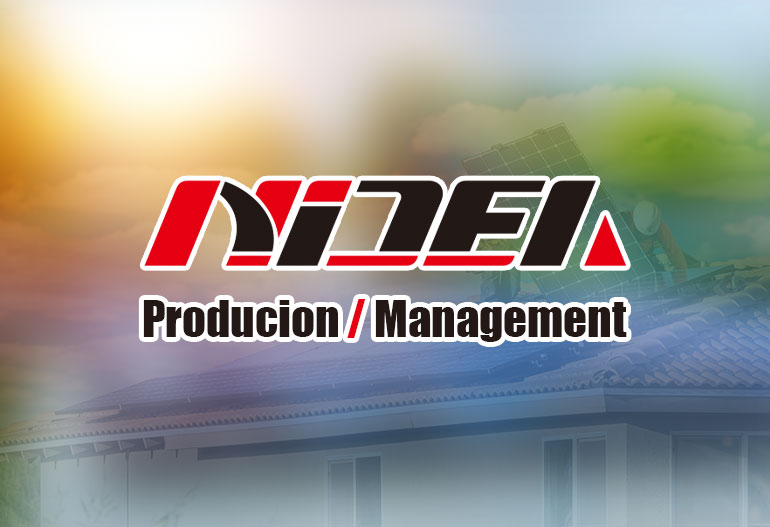NMS Solar Inverter: AI-Based Fault Prediction System
1. Introduction: The Evolution of Solar Inverter Technology
The global transition towards renewable energy has positioned solar power as a cornerstone of the sustainable energy landscape. As photovoltaic (PV) systems proliferate, ensuring their reliability, efficiency, and longevity has become paramount. Solar inverters, which convert direct current (DC) from PV panels into grid-compliant alternating current (AC), are the most critical and vulnerable components in these systems. Their failure can lead to significant energy yield losses, high maintenance costs, and system downtime.
Traditional maintenance strategies, such as reactive (fixing after failure) and periodic preventive maintenance, are increasingly inadequate. They are costly, inefficient, and cannot prevent unexpected outages. The next frontier in inverter technology is predictive maintenance (PdM), which aims to anticipate failures before they occur. The NMS Solar Inverter represents a paradigm shift in this domain by integrating an Artificial Intelligence (AI)-Based Fault Prediction System. This paper explores the architecture, functionality, and transformative benefits of this innovative technology, which is poised to redefine reliability standards in the solar industry.
2. The Limitations of Conventional Maintenance Approaches
•
Reactive Maintenance: Addressing failures after they occur results in unplanned downtime, lost energy production, and potentially catastrophic secondary damage to other components. Emergency repairs are also more expensive and logistically challenging, especially for large-scale or remote solar farms.
•
Preventive Maintenance: Time-based or usage-based maintenance involves routine inspections and part replacements regardless of actual need. This approach reduces unexpected failures but is inherently inefficient. It leads to unnecessary maintenance costs, parts wastage, and does not account for the unique degradation trajectory of each inverter.
•
The Data Opportunity: Modern inverters are equipped with sensors that generate vast amounts of operational data—voltage, current, temperature, power output, and error logs. Traditionally, this data was underutilized. The NMS inverter leverages this data through AI to move from a schedule-based to a condition-based maintenance model.
3. Architecture of the NMS AI-Based Fault Prediction System
The system is built on a closed-loop data pipeline that integrates physical hardware with cloud-based intelligence.
3.1. Data Acquisition Layer (Edge Layer)
•
High-Resolution Sensors: NMS inverters are equipped with an array of high-fidelity sensors that monitor key parameters at a high sampling rate:
•
Electrical Parameters: DC input voltage/current per string, AC output voltage/current, power factor, frequency, insulation resistance.
•
Thermal Parameters: Heat sink temperatures, capacitor temperatures, PCB hotspot temperatures (via integrated thermal sensors).
•
Component Parameters: Fan speeds, switching states of IGBTs/MOSFETs.
•
Edge Pre-processing: Raw data is initially processed on-device to extract relevant features, reduce noise, and perform basic health checks before transmission.
3.2. Data Transmission Layer
•
Secure Connectivity: Processed data is transmitted to the cloud platform via integrated communication modules (4G/LTE, Ethernet, or Wi-Fi) using encrypted protocols (e.g., TLS/SSL).
•
Adaptive Reporting: The system operates in two modes:
•
Regular Mode: Transmits aggregated health data and feature sets at regular intervals (e.g., every 5-15 minutes).
•
Event-Triggered Mode: Immediately streams high-resolution data around anomalous events (e.g., a voltage spike or temperature excursion) for detailed analysis.
3.3. Cloud-Based AI Analytics Platform
This is the core of the fault prediction system, residing on a scalable cloud infrastructure.
•
Data Lake: A massive repository storing historical and real-time time-series data from thousands of inverters deployed globally.
•
Machine Learning/Deep Learning Models: This is where the intelligence resides. Several models are trained and run in parallel:
•
Anomaly Detection Models: Unsupervised learning models (e.g., Autoencoders, Isolation Forests) learn the "normal" operating patterns of an inverter. They flag significant deviations from this baseline that may indicate nascent faults.
•
Supervised Classification Models: Models (e.g., Gradient Boosting Machines, Recurrent Neural Networks - RNNs/LSTMs) are trained on labeled historical data where specific faults (e.g., capacitor aging, fan failure, PCB crack) are known. These models learn the precise data signatures that precede each failure type and can classify the specific fault mode with high probability.
•
Prognostic Health Management (PHM) Models: These models estimate the Remaining Useful Life (RUL) of critical components, such as DC-link capacitors and cooling fans, by modeling their degradation trajectories.
3.4. Action and Feedback Layer
•
Alerting System: The platform generates actionable alerts. These are prioritized and sent via email, SMS, or integrated into fleet management dashboards. Alerts specify the predicted fault type, severity, affected component, and estimated time to failure.
•
Prescriptive Recommendations: The system goes beyond prediction to offer prescriptive insights—suggesting specific maintenance actions, required spare parts, and even optimized scheduling for a service visit.
•
Continuous Learning: The outcome of each prediction (whether it was accurate) is fed back into the AI models as a new labeled data point. This creates a virtuous cycle of continuous learning and improvement, making the system more accurate over time.
4. Key Fault Scenarios and AI Prediction Mechanisms
•
DC-Link Capacitor Degradation:
•
Failure Mode: Electrolytic capacitors age and lose capacitance, leading to increased ripple current, overheating, and inverter shutdown.
•
AI Prediction Signature: The AI model detects subtle increases in the high-frequency ripple component on the DC bus voltage and slight shifts in the capacitor's internal equivalent series resistance (ESR), inferred from thermal and current data trends.
•
IGBT/MOSFET Failure:
•
Failure Mode: Thermal cycling causes bond wire fatigue and solder cracking, leading to increased on-state resistance and eventual short-circuit failure.
•
AI Prediction Signature: Models analyze the long-term trend of thermal resistance (junction-to-case temperature delta) and the rate of change of switching losses. A gradual increase signals impending failure.
•
Cooling Fan Failure:
•
Failure Mode: Bearings wear out, reducing airflow and causing inverter derating or overheating.
•
AI Prediction Signature: The model monitors the correlation between fan speed command, actual RPM (if sensed), and heat sink temperature. A deviation from the normal cooling efficiency curve, such as a fan requiring higher RPM to maintain the same temperature, indicates degradation.
•
PCB Solder Joint Fatigue:
•
Failure Mode: Thermal expansion and contraction cause micro-cracks in solder joints, leading to intermittent connections and faults.
•
AI Prediction Signature: Anomaly detection models identify intermittent, spurious voltage readings or communication errors between boards that correlate strongly with specific temperature cycles.
5. Transformative Benefits for Stakeholders
•
For Asset Owners & Operators:
•
Maximized Energy Yield: Drastically reduces unplanned downtime by scheduling maintenance during non-production hours (nighttime or low-irradiance periods).
•
Reduced O&M Costs: Lowers spare parts inventory costs through just-in-time ordering and eliminates expensive emergency service calls. Optimizes technician time and travel.
•
Enhanced ROI: Improves system availability and longevity, directly boosting the financial return on the solar asset.
•
For O&M Service Providers:
•
Transformed Business Model: Shift from reactive "break-fix" to value-added predictive service contracts.
•
Operational Efficiency: Enables planned, optimized maintenance routes and ensures technicians arrive on site with the correct parts and tools, fixing issues on the first visit.
•
For Inverter Manufacturers:
•
Product Differentiation: A powerful competitive advantage in a crowded market.
•
Valuable Insights: Fleet-wide data provides unparalleled insights into real-world failure modes, informing future design improvements and reliability testing.
6. Challenges and Future Directions
•
Data Quality and Quantity: AI models require large volumes of high-quality, labeled data for training. Collaborations across the industry to create shared, anonymized datasets could accelerate development.
•
Explainable AI (XAI): For technicians to trust AI recommendations, the system must provide clear explanations for its predictions (e.g., "fan failure predicted due to 25% reduction in cooling efficiency over the past 90 days").
•
Edge AI Integration: The future will see more lightweight AI models deployed directly on the inverter (at the edge) for real-time, low-latency fault detection, with the cloud providing heavier, fleet-wide analytics.
7. Conclusion
The integration of an AI-based fault prediction system into the NMS Solar Inverter marks a revolutionary leap forward in solar technology. It transforms the inverter from a passive component into an intelligent, self-aware node in a vast energy network. By harnessing the power of machine learning on operational data, it moves the industry beyond traditional maintenance models, enabling unprecedented levels of reliability, efficiency, and cost-effectiveness.
This technology is not merely an incremental improvement; it is a foundational shift towards truly smart and resilient solar power plants. It empowers stakeholders to predict the future of their assets and take proactive control, ensuring that solar energy continues to be a dependable and dominant source of global electricity for decades to come. The NMS inverter with AI fault prediction is not just a product; it is the embodiment of the future of solar operations and maintenance.

